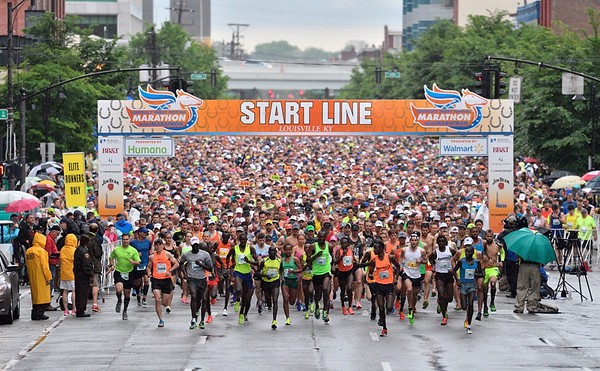Today ends a month that saw food riots erupt in at least 33 countries around the world. It’s easy to imagine those outbreaks in developing countries with the situation we face here and now: daily reports of increasing food prices, peppered with news of increasing demand on food pantries that face dwindling supplies.
So far, cities’ ability to “manage” hunger has allowed the issue to become just another societal bother. Late last year, LEO reported on shortages at food banks caused by myriad reasons, from the commercial to the political. Months later, the situation isn’t any better — in fact, it is getting worse.
“What’s happening now is it’s becoming more competitive,” said chef Timothy Tucker at the Salvation Army Center for Hope in downtown Louisville. “My local GFS (Gordon Food Service, a major national) dealer, who I’m able to buy food from from time to time, has conveyed to me that a lot items have gone up 30 percent in cost.”
At the same time that larger systems are failing on many fronts, however, regular folks have taken to heart their responsibility to the increasing number of residents who can’t afford to feed themselves adequately.
One such benefactor is Steve Hale of Springfield. He recently donated an acre of land for the sole purpose of growing food for the Salvation Army in Louisville. He hired a farmer to prepare and plant crops, which Salvation Army clients will then tend and harvest.
“He’s growing, as per my specifications, what we need, and it’s coming directly to this shelter for free,” Tucker said.
“We’re calling it a Victory Garden, like they had back in World War II,” Hale said. He said he also volunteers and donates often to St. Vincent DePaul, Little Sisters of the Poor, St. John Center for the Homeless and Volunteers of America, who aim not only to feed people, but also improve their situations. He said he constantly has to remind people in other parts of the state that many of the homeless he encounters in Louisville are from their own hometowns.
Tucker said he is optimistic about connecting directly to farmers while the middlemen — government and business — continue to prove unfit for the task. One donor recently bought the Salvation Army a CSA (Community Supported Agriculture) subscription that will guarantee food from a local farm throughout the season. “But it’s great because it also enhanced the relationship with (farmers),” said Tucker. “I’m in the process now of starting an account with Grasshoppers (local farmer-owned food distributors), and hopefully I’ll periodically be able to buy meat and other things from them.
“There’s a lot of local grassroots things that are starting to happen where people are starting to take things into their own hands,” Tucker said.
It could take a redoubling — possibly even a quadrupling — of those efforts to address food issues that are affecting more and more people in Louisville.
“The other troubling thing is that people who were donors a few years ago are now clients,” said Denton Randall, director of community relations at Dare To Care. The food bank collects and distributes one million pounds of food to area organizations every six weeks, but it’s not enough. “Our situation is that our demand is up pretty dramatically. Back in December we did a fairly formal assessment with all of our distribution centers and found requests up 25-30 percent over same time (the previous) year,” Randall said. “Since then, anecdotally, we believe that it’s continued to go up.”
He agreed that community efforts like food drives have been dramatic efforts toward filling gaps as Dare to Care must buy more high protein items like canned meat, tuna and baby formula, whose costs have risen considerably in recent months. Although he worries at the growing number of residents depending on food aid in Louisville, he said he believes the community will continue to stretch itself even as the economy tightens.
“Part of it is that food is so central to everybody, it’s so personal. … Folks are aware, so when it comes time to help out the less fortunate, I think folks give a little extra.”
The annual letter carriers’ food drive on May 10 will be a crucial test of whether the community remains up to the task. The food that mail carriers pick up on this day helps address a spike in requests for food assistance that comes when children are out of school for the summer and no longer have access to free and reduced-cost school lunches. Parents who cannot afford to feed them at home call on local food banks. Randall said donations for this particular drive increase a little every year.
“We’ll know pretty quickly after the Saturday after Derby. It’ll give us a pretty good picture of where we are. If (the amount of donations) stays the same or drops down a little, then we might really start to worry.”
Contact the writer at
[email protected]





